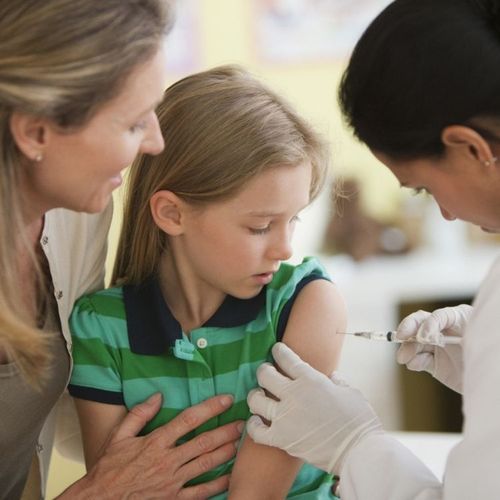A new single-shot vaccine that protects A children against measles, mumps, rubella and chicken pox could mean one less shot and one less doctor visit, advocates say.
The US Food and Drug Administration (FDA) has approved the vaccine after testing in more than 5,000 children. It is called Proquad and is manufactured by Merck.
The vaccine-which is a combination of the company's measles, mumps, rubella (MMR II) vaccine and its chicken pox shot--is designed for children from 12months to 12 years of age.
Proquad is the first and only vaccine that is approved in the United Stares to help protect against these four diseases in one single shot, according to Merck.
Advantages
"The advantage of putting two vaccines together has been recognized by medical authorities," says Dr. Henry Shinefield, a clinical professor of pediatrics and dermatology at the University of California, San Francisco, School of Medicine, and a consultant to Merck.
"There is an obvious advantage to the children," Shinefield says. "They only get one shot." The advantage to doctors is they can limit the number of different vaccines they have on hand, he says.
Shinefield notes that the four-in-one vaccine also benefits the community. Having to get only one shot instead of two may mean that more children get vaccinated, he says. "The community benefits by having less disease."
"Based on the public health benefits realized following the introduction of other combination vaccines, such as MMR II, we expect Proquad to become a primary option for the prevention of measles, mumps, rubella and chicken pox," says Dr. Mark Feinberg, vice president of policy, public health and medical affairs in Merck's Vaccine Division.
Proquad can help reduce the gap that exists in the United States between vaccination rates for chickenpox-which were an estimated 87.5% in 2004-andvaccination rates for measles, mumps and rubella-which were an estimated 93% in 2004, Feinberg says. "The main goal for any vaccine is to help eliminate disease, and this is possible when very high vaccination rates are achieved in the community."
In terms of potential side effects, Shinefield doesn't see any more danger than there is with the current two vaccines. "It is important that children and parents be made aware of every side effect," he says. "The side effects with this vaccine are in line with what we see with other vaccines," he notes.
Concerns
However, some experts are cautious about the use of this new vaccine.
"The FDA should have required far larger studies," says Barbara Loe Fisher cofounder and president of the National Vaccine Information Center. "You are combining four live viruses into one vaccine, which has never been done before."
Fisher notes that there are still unanswered questions about the long-term adverse effects of these vaccines when they are given separately.
And she believes it has not been examined sufficiently because it has only been tested against other vaccines and not against a placebo. "With a new vaccine like this, you should be comparing it against placebo to find out the true adverse reaction rate," Fisher says.
